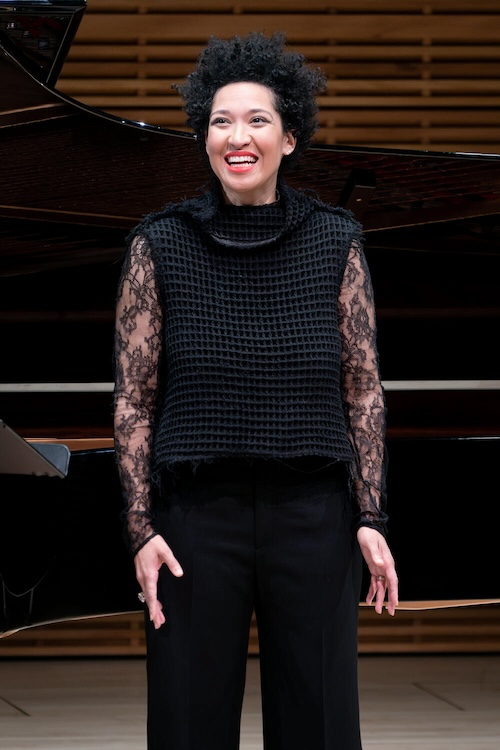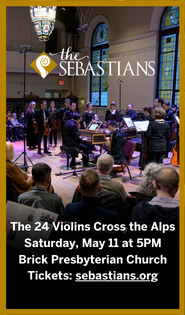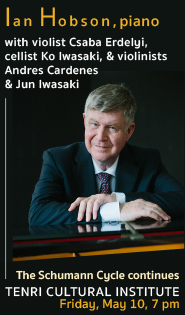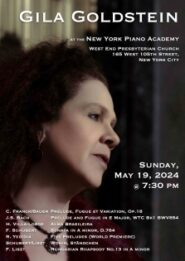Bullock roves wide and deep in personal Zankel Hall program

It would have once been almost impossible to imagine a vocal recital by a major artist with songs by Alban Berg, Bob Dylan, and Rodgers & Hammerstein on the program. These are different times, however, and what once would have been dubious box-office is now perfectly attuned to the times.
And when the artists are soprano Julia Bullock and pianist Bretton Brown, the result was an extraordinary evening of song at Zankel Hall on Friday evening.
Known for her “probing intellect,” Bullock, however, is foremost a singer with daunting communicative skills. The concept which she probed in this recital was the transformative impact on a person of the environment in which they exist, whether the individual is accepting of it or not. This is a singer who never shies away from expressing the truth, whether it be historical, political, or emotional.
Often this took the form of songs by people who were outside of the musical mainstream, or ones which dealt with those marginalized by or unable to fit into the societies in which they lived. She found such connections in characters as disparate as Shakespeare’s Ophelia in Hamlet and Emile de Becque in Rodger & Hammerstein’s South Pacific.
Bullock opened the recital with songs by Samuel Barber, whose embrace of Romanticism put him at odds with the more progressive elements of the musical establishment in mid-twentieth-century America. The three songs which she sang—“My Lizard (Wish for a Young Love),” “Nuvoletta,” and “The Daisies”—outlined the wistful nostalgia, zaniness, and embrace of the bizarre that would course through the recital.
Even the composer couldn’t make sense of James Joyce’s poem “Nuvoletta,” which found Bullock singing with her head inside the piano. She vividly and effortlessly captured the ephemeralness of the song’s nonsensical imagery. This same joie de vivrefilled Bullock’s witty and defiant rendition of “Non, Monsieur mon mari” from Francis Poulenc’s opéra bouffe, Les Mamelles de Tirésias, which the singer described as a feminist rebellion (although it was more like an explosion in this performance).
As with the Barber songs, Bullock performed songs by Kurt Weill which spanned the composer’s career from his collaboration with Bertolt Brecht in Germany to his Broadway hit, Lady in the Dark.
The outlier was the first, “Complainte de la Seine,” which Weill composed in Paris after fleeing Nazi Germany. This setting, like earlier songs dating from Weill’s collaboration with Brecht, “Ballade vom ertrunkenden Mädchen” and “Song of the Hard Nut,” show the composer at his most hard-edged and bleak. With crystalline tone, perfect pitch, and a delivery void of sentiment, Bullock sang of cadavers resting at the bottom of the Seine, the Marxist revolutionary Rosa Luxemburg’s decaying corpse in a Berlin canal, and the calculated transactions that fuel capitalism. With “The “Princess of Pure Delight,” Bullock switched gears, projecting a cool sophistication that evoked the era.
Song cycles by Richard Strauss and Alban Berg might have sounded incongruous with such musical fare, but Bullock chose wisely. Strauss’s Drei Lieder Ophelia permitted the soprano to depict the fragile mental state of the demented girl with a ferocious intensity and a remarkably varied vocal palette. In the first song, “Wie erkenn’ ich mein Treulieb,” when Bullock sang of flowers moistened with love’s showers, her voice did not exactly bloom on the final high note. In “Sie trugen ihn auf der Bahre bloss,” the last of the three songs, Bullock expressed Ophelia’s despair over the visions of her dead father in manic outbursts which veered from despair to dazed disbelief.
Bullock’s most sublime singing came with Berg’s Altenberg Lieder. Viennese audience’s greeted the songs with such derision in 1913 that Berg never permitted them to be performed during his lifetime. The five songs are settings of enigmatic verses by the poet Peter Altenberg which he sent to friends on postcards.
The cycle begins with a depiction of the sparkling beauty of falling snow in “Seele, wie bist due schöner,” and concludes with the gentle melting of it in “Hier ist Friede.” Brown etched these images with precision, beauty, and great depths of emotion, which created the setting for Bullock to spin vocal magic, although not of the conventional sort.
Bullock emitted growls and hollow sounds, as well as melismas that sparkled like icicles. Her use of sprechstimme, a vocal style that combines elements of song and speech, imparted a haunting atmosphere to the vivid depictions of nature and emotion upheaval. Bullock stripped all color from her voice as she sang of the ash-blond hair of a lover doomed to wait for eternity in “Nichts ist gekommen.”
A substantial portion of the second half of the recital was devoted to songs by Richard Rodger and Oscar Hammerstein. Bullock told the audience that their music had been a part of her life from her earliest years growing up in St. Louis. “Dites-Mois” from South Pacific was the first song that she ever sang in public at the age of ten before an audience of thousands.
Bullock said their songs have had an impact on her both personally and as a performer. She pointed out the straightforward depiction of outsiders and intolerance in the musicals, as well as the radical and positive visualization of women by Rodgers & Hammerstein in their narratives.
The audience was enthralled as Bullock sang some of the greatest hits from The Sound of Music and South Pacific. For the most part, these were straightforward renditions of beloved songs, but Bullock and Brown could be provocative, such as in “You’ve Got to Be Carefully Taught” from South Pacific. Bullock delivered the song’s message with a matter-of-fact directness which was intensified by Brown’s punctuation from the piano.
Bullock envisioned the program as two long musical and emotional arcs to be performed uninterrupted apart from her short commentaries. That hope dissipated and then all but vanished during the Rodgers and Hammerstein songs. Essential to this concept was the placement of songs by American artists throughout the program which extolled the same themes in a more vernacular style.
Like the great musicals, spirituals too have been central to Bullock’s musical journey. The first half of the recital concluded with a profoundly moving “Deep River.” She returned to sing the introduction from Marian Anderson’s recording, “Jus’ Keep on Singing.” Bullock described listening to Anderson sing this brief utterance as being transformational. It was as well in Bullock’s rendition, her depth of emotion anticipated by Brown’s expressive playing of the piano introduction.
There were also songs linked to Odetta Holmes, who was known as the voice of the American civil rights movement in the Sixties. Bullock sang Bob Dylan’s “Masters of War” with a penetrating, unflinching directness. Odetta’s arrangement of “Going Home” and Elizabeth’s Cotten’s “Freight Train” followed, the latter again emboldened by Brown’s accompaniment.
Songs by Connie Converse, an aspiring folk singer-composer who simply disappeared at the age of 50 in 1974, were at the heart of the program. Converse wrote songs that sprung from a solitary soul. Her music only came to light when a tape of her performing songs were played on a popular radio show. Bullock found the humor and earthiness in her wistful rendition of “Talkin’ Like You (Two Mountains”) and sang with simplicity, directness, and absolute clarity of tone in “I Have Considered the Lilies,” inspired by the famous Biblical verse.
Bullock ended the recital with Converse’s poignant ballad “How Sad, How Lovely,” a meditation on the loveliness and sadness of life.
Soprano Diana Damrau and pianist Helmut Deutsch perform in recital on February 6. carnegiehall.org






